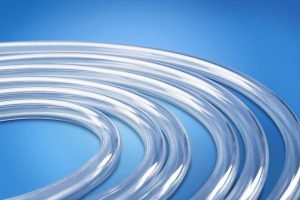Tubing and Parylene Coating
Posted by Sean Horn
Friday, June 15, 2018 7:30
@ 7:30 AM
Operationally, a tube is a hollow cylinder composed of glass, metal, plastic or a similar substance, designed to contain or transport something, typically liquids or gases. When many people think of tubing, they envision its use in construction or mechanics. Tubing of this nature is defined not only by its purpose and the stuff its made of, but also by two dimensions — outside diameter (OD) and wall thickness (WT).
 Used as much for structural purposes as conveyance, these tubes can be square or rectangular in shape, as well as round. Tubing of this scale is also employed for automotive, energy, engineering, and precision/pressure uses. Depending on its purpose, larger-scale tubing may benefit from conformal coating, but this is more widespread for piping, where liquid films of epoxy or silicone are common.
Used as much for structural purposes as conveyance, these tubes can be square or rectangular in shape, as well as round. Tubing of this scale is also employed for automotive, energy, engineering, and precision/pressure uses. Depending on its purpose, larger-scale tubing may benefit from conformal coating, but this is more widespread for piping, where liquid films of epoxy or silicone are common.
Conformal coating is more frequently applied for smaller, specialized tubing, used for biomedical, computer or electronics purposes. In these cases, tubing is also used as a means of material conveyance, such as:
- carrying medicines through implanted devices within the body, or
- liquid cooling for computers.
Size measurement for this tubing differs somewhat from that used for construction and other larger-scale applications. While OD measurements remain necessary, inner diameter (ID) measures replace WT. The proliferation of microelectromechanical systems (MEMS) and nanotechnology (NT) increases the need for reliable conformal coating of specialized tubing measured in microns or nanometers.
Liquid conformal coatings – resins of acrylic (AR), epoxy (ER), silicone (SR) and urethane (UR) – are impractical for both tubing uses and MEMS/nano applications:
- Their effective coating layers — 0.025–0.127 millimeters for AR/ER/UR and .051–0.203 mm. for SR – are far too thick MEMS/NT devices.
- Liquid deposition methods – brushing, immersion (dipping), spraying – cannot be adapted for adequate MEMS/NT coverage.
As important, liquid applications are not reliable for coating tubing of any size. Applied as wet material, brushing is slow and will not evenly coat inner tubing surfaces. Both dipping and spraying may provide a more evenOD coat and better internal coverage, but cannot be relied upon to provide a uniform and effective protective layer for ID surfaces.
In contrast, parylene (XY) conformal coating can be successfully applied to tubing regardless of size. Its specialized chemical vapor deposition (CVD) method creates pinhole-free conformal films of exceptional uniformity. Powdered XY dimer material is transformed into a gas under a vacuum, during CVD. Its vaporous condition allows XY to travel to, enter and coat anywhere on the substrate the gaseous XY reaches, including the tube’s inside surfaces.
- Unlike liquid coatings, whose wet application methods prevent film materials from reaching a substrate’s obscure or hidden surfaces, parylene covers the entire assembly.
- Vaporously penetrating a substrate’s surface, XY provides a protective layer both within the object’s surface, as well as to its interior, offering a further stratum of conformal protection.
- This applies to tubing, regardless of size or shape. Gaseous migration of parylene into the interior of the tube allows uniform ID coating. Moreover, parylene’s ultra-thin films, typically from 0.013–0.051 mm., are manageable at levels less than one micron (1 μm/1,000 nms), encouraging MEMS/NT tubing uses. XY’s extremely thin conformal films add minimal build-up to either tubing’s OD/ID.
Truly conformal parylene generates a slippery, easily cleaned finished surface of exceptional dry lubricity, permanently bonding to film surfaces, both external and internal. It does not attract debris. XY’s ultra-thin coatings offer additional advantages for tubing:
- adherence to the range of existing tubing materials/topographies,
- biological/chemical inertness,
- bubble-free conformability/flexibility at film thicknesses > 0.5 μms.,
- low-friction lubricity,
- penetration of extremely small crevices/spaces, and
- reliable dielectric/moisture barrier properties, with
- resistance to bacteria/fungus growth, heat, radiation and solvents.
- Strong, resilient coatings eliminate pathways for corrosive compound entry.
These combined properties make biocompatible, dry lubricant XY the conformal film bonds without fail to tubing’s inner and outer surfaces, at thickness levels that add virtually nothing to its final dimensions.
To learn more about medical device coatings, download our whitepaper now:
The Truth about Medical Devices and Parylene
Comments
Homepage 4/17/2020. 10:17:10 AM
... [Trackback] [...] Informations on that Topic: blog.paryleneconformalcoating.com/whats-the-difference-between-potting-and-conformal-coating/ [...]

londondrugscanada.bigcartel.comlondon-drugs 4/17/2020. 10:17:10 AM
cialis uk https://londondrugscanada.bigcartel.com/london-drugs This is nicely expressed. !